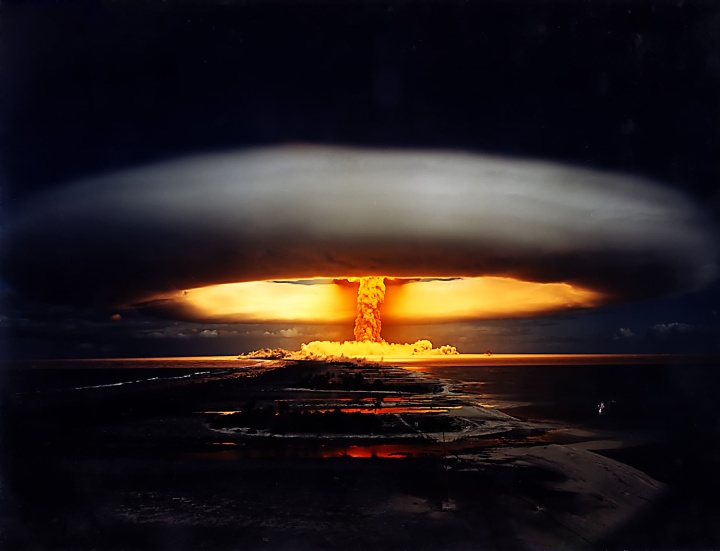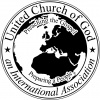God's Framework for End-Time Prophecy

How should we view prophecy? Can it provide spiritual benefits?
The apostle Peter mentioned that prophecy should serve to strengthen our hope and faith in the future. He said: "And so we have the prophetic word confirmed, which you do well to heed as a light that shines in a dark place, until the day dawns and the morning star rises in your hearts …" (2 Peter 1:19).
Here Peter compared Bible prophecies to a light that provides visibility until the final coming of God's Kingdom, brought by Jesus Christ to earth. When this occurs every eye will see His glory as if it is a great light (Matthew 24:27-30; Revelation 1:7).
God gives us an outline and sequence of prophetic events, but many specifics remain unclear. Some things we can see clearly, but others are beyond our understanding at this point in history.
In other words, the Bible provides a reliable framework of prophecy, but it can be counterproductive to try to interpret every yet-to-be-fulfilled detail in the light of our circumstances. Such circumstances could change dramatically before those details come to pass.
So what is the framework of prophecy that remains sure? Among the many prophecies of events leading up to Christ's return, several major prophetic scenarios can be identified and specifically confirmed as they occur. As Peter said, we "do well to heed" them.
First condition: Man's ability to annihilate human life
The first of these certain prophecies deals with a specific condition described by Christ that would be present only as the end time drew near. He said to His disciples: "It will be a time of great distress; there has never been such a time from the beginning of the world until now, and will never be again. If that time of troubles were not cut short, no living thing could survive; but for the sake of God's chosen it will be cut short" (Matthew 24:21-22, New English Bible).
Jesus warned that a time would come when mankind would see its destructive capacity grow so awesome that all human life could be annihilated. This is what makes the time of "great distress" so terrifying, unequaled in human history.
Mankind has been fighting wars since the dawn of history. But man never had the ability—with rocks and clubs, bows and arrows, cannons or automatic weapons—to literally exterminate every human being on earth.
This changed in 1945 with the detonation of the first atomic bombs, followed by the development of far more destructive hydrogen bombs. With thousands of nuclear weapons at its disposal, as well as thousands of tons of chemical and biological weapons, humanity has the ability to destroy all human life from the planet many times over.
This situation never existed in history until the latter half of the 20th century. Mankind has never been a great caretaker of the earth, yet never before have we had the capacity to destroy all human life. But Christ said that collectively, if left unchecked, we would do exactly that. And this is one of the reasons He must intervene—to save mankind from self-annihilation!
Second condition: The Jewish nation reborn
The second condition that must exist before Christ's return concerns the existence of the modern nation-state of Israel in control of Jerusalem for a time.
The survival of the religion and culture of the ancient Jewish people, who witnessed the rise and decline of such great civilizations as Egypt, Assyria, Babylon, Persia, Greece and Rome, goes against the odds.
The fact that they were never assimilated into the nations where they were scattered is unprecedented. A historian of the 19th century, Heinrich Graetz, noted that "a nation which has witnessed the rise and decay of the most ancient empires, and which still continues to hold its place in the present day, deserves the closest attention."
The French emperor Napoleon is reported to have been passing near a synagogue when he heard weeping inside. When he asked, "What is this crying?," he was told the Jewish people were weeping over the destruction of their temple. Impressed, Napoleon said, "A people that longs so much for its city and its temple are bound to restore them one day!"
That prediction has partially come to pass. Now the Jews—descendants of the ancient kingdom of Judah—again are in possession of Jerusalem, and their "weeping" takes place on the western side of the Temple Mount, at the retaining wall for the vast platform Herod the Great constructed to support the rebuilt temple. There, at the Western Wall, many Jews still cry and bemoan the loss of their temple and pray for its restoration. Thus the place is also sometimes aptly called the Wailing Wall.
Christ described conditions under which, as the end time approached, Jews would again control Jerusalem and the "holy place." Later He said the holy place would be desecrated. He stated, "Therefore when you see the 'abomination of desolation,' spoken of by Daniel the prophet, standing in the holy place (whoever reads, let him understand), then let those who are in Judea flee to the mountains" (Matthew 24:15-16). The abomination of desolation, described in Daniel 8-12, deals with the defiling of the holy place in Jerusalem.
Before 1948 this seemed impossible. The Jews had been scattered for close to 2,000 years, and the Arabs had controlled the Holy Land for centuries. Jews did not have the military power, unity or backing of most of the world to come to their ancient homeland. Many books were written about the overwhelming odds against Zionism, the attempt to establish a Jewish homeland. Yet a Zionist state was established.
Once the fledgling nation of modern Israel was founded in 1948, it appeared that its inhabitants would never control Jerusalem, and the populous Arab nations surrounding her pledged they would never allow it. Yet in the Six-Day War of 1967, the state of Israel took possession of all of Jerusalem. But the Israelis allowed control of the Temple Mount, the platform on which the temple had stood, to remain in the hands of Arab Muslims.
Since Arab Muslims control the Temple Mount, or the "holy place" that Christ referred to in His prophecy, there is still a part of the prophecy that has not been fulfilled. Since 1989 organized efforts have continued to prepare for the building of a new temple. From 1990 on, certain Israeli Jews have tried to place the first stone of a new temple on the Temple Mount, to no avail. Police and Muslim authorities have prohibited their entry onto the Mount, yet the resolve is there.
That is how matters stand. Christ's prophecy has been partially accomplished, with Israel in control of Jerusalem, but with other parts of His prophecy waiting to be fulfilled.
Third condition: A new superpower to emerge
The third prophecy deals with the latter revival of the Roman Empire, prophesied extensively in Daniel and Revelation.
Daniel, interpreting Nebuchadnezzar's dream of a colossal human image, spoke of a series of "kingdoms" to arise on the world scene. The first of these, said Daniel, was the Babylonian Empire under Nebuchadnezzar himself (Daniel 2:28-38). It was to be followed by three other kingdoms (Daniel 2:39-40). Comparing history with other prophecies, we can understand that these four kingdoms were, in order, the Babylonian, Medo-Persian, Greco-Macedonian and Roman empires.
Speaking of the fourth and final kingdom, the Roman Empire, Daniel said it would be "strong as iron, inasmuch as iron breaks in pieces and shatters everything; and like iron that crushes, that kingdom will break in pieces and crush all the others" (Daniel 2:40). Rome indeed proved to be more dominant and enduring than its predecessors, swallowing up their remnants in a reign that lasted for centuries.
However, Daniel also revealed fascinating prophetic details of this kingdom. He said the legs and feet of the image in Nebuchadnezzar's dream represented a kingdom, later shown to be the Roman Empire. The image had feet and toes composed "partly of potter's clay and partly of iron." This indicated that "the kingdom shall be divided" and "partly strong and partly fragile." Also, "just as iron does not mix with clay," the components of this kingdom would not adhere firmly together for long (Daniel 2:41-43).
Then, describing Jesus Christ's return and His overthrow of all human kingdoms and governments, Daniel says, "in the days of these kings the God of heaven will set up a kingdom which shall never be destroyed … it shall break in pieces and consume all these kingdoms, and it shall stand forever" (Daniel 2:44).
The Bible prophesies that a group of 10 "kings," or national leaders, through alliances or other arrangements will give rise to a union that will fulfill these end-time predictions. Daniel's prophecy indicates these leaders will preserve their cultures and languages, so it will not be one integrated group of states, such as the United States, but 10 individual political and cultural entities united for a common purpose. Some will be much stronger than the others.
Notice that the book of Revelation gives more details: "The ten horns which you saw are ten kings who have received no kingdom as yet, but they receive authority for one hour as kings with the beast. These are of one mind, and they will give their power and authority to the beast. These will make war with the Lamb, and the Lamb will overcome them, for He is Lord of lords and King of kings; and those who are with Him are called, chosen and faithful" (Revelation 17:12-14).
The current moves to expand and solidify the European Union appear to be a precursor to this prophesied power. It is interesting to let history reveal the roots of the movement to unify Europe.
In the Jan. 29, 1996 issue of Newsweek, Michael Elliot reported: "In January 1957, six nations signed a treaty on the site of the ancient Roman Capitol, and brought into being the European Economic Community … An aide to Paul-Henri Spaak, the then Belgian foreign minister, remembers that his boss said, 'Do you think that we have laid the first stone of a new Roman Empire?' Recalls the aide, 'We felt very strongly we were Romans that day.'"
Certainly the idea of establishing a new Roman Empire was on the minds of the founders of the current organization of European nations. It has continued to prosper as barriers to integration tumble and greater cooperation and unity in economic and military affairs come about. Time will tell where these trends will lead—and how quickly.
The prophetic connection
Where does this leave us?
With mankind possessing the capacity to destroy all human life in several ways, with Israel in control of Jerusalem and a desire among some Israelis to restore the temple and sacrifices, and with a strong and determined effort afoot to unify the nations of Europe, we would do well to heed the warnings of biblical prophecy and not ignore its connection with world conditions.
These scenarios appear to be the most likely way various prophecies of Daniel and Revelation could be fulfilled in light of current conditions. In any event, prophecies of the Bible will come to pass whether or not we understand them in every detail. In the meantime we should heed Jesus Christ's warning in Matthew 24:44: "Therefore you also be ready, for the Son of Man is coming at an hour you do not expect."
